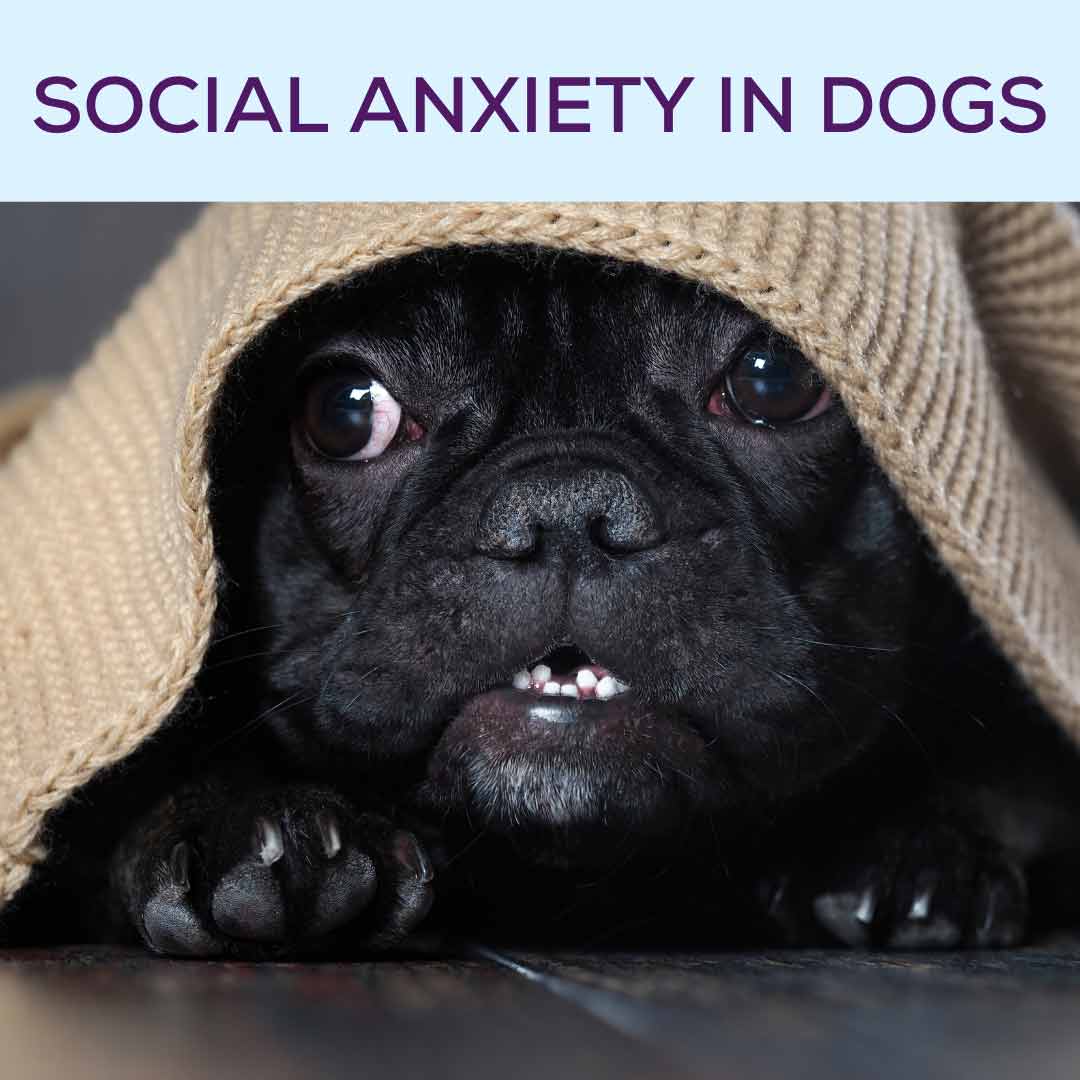How can you help social anxiety in dogs?

Some dogs can experience anxiety or fear in social situations, while others are anxious even at home. It may happen when you take your dog to the park, meet new people, go to the vet, or even around children or other dogs.
That is why proper socialization is essential for all dogs. Failure to socialize can result in a dog with crippling social anxiety, fear, and sometimes even aggression. Many people don't realize how a lack of socialization can impact their dog’s behavior, and end up with dogs who are kept indoors and alone due to their reactivity.
Dog anxiety can affect all breeds, but may affect each individual dog differently. Although it is something that all dogs experience from time-to-time, if high levels of anxiety are left unchecked, a dog can develop an anxiety disorder. If left untreated this can lead to behavioral and other aggression issues. Social anxiety is fairly common, though experienced in different situations and to varying degrees. The cause of social anxiety often stems from lack of positive socialization or bad experiences as a puppy. A dog that has had few new experiences is fearful of any change in his environment and may react badly. Although the process to overcome this anxiety is time consuming it will help both you and your pet be more at ease and can be done at home or with a professional trainer.
While some dogs may become very shy and withdrawn, others may feel trapped which often results in aggression. When a cornered dog experiences the biological fight-or-flight response, the only available action is to fight and they may take it out on you or your family members at that moment.
Aggressive behaviour traits include barking, growling or jumping toward a person or pet or baring their teeth. Timid and fearful behaviour would be when your pet retreats behind you, starts whining, or even crying. Some dogs could even show signs of extreme nervousness or discomfort like panting or drooling. It is important to watch out for your dog’s behaviour around guests and new situations, especially if they are new to the house.
The clinical signs of anxiety vary depending on the severity of the fear or anxiety that the dog is suffering from. Some of the most common clinical signs:
Mild fears: Include trembling, tail-tucking, hiding and reduced activity.
Panic Fears: Include panting, pacing, escape behaviour and increased motor activity, licking and biting their own body, tail-chasing and circling.
Zoomies are often associated with happy feelings but it actually could be a very nervous dog trying to tell you that something is wrong!
Your veterinarian can help you identify the type of anxiety your dog suffers from and the possible causes and triggers that may be worsening the situation. Your veterinarian will also be able to help you determine if the anxiety is simply situational, or if it is becoming a medical or mental health issue for your dog. Additionally, veterinarians can also rule out any other medical conditions that could be causing your dog’s symptoms, so it is very important to consult them first - they may even prescribe anti-anxiety medications.
There are several training strategies owners can use to deal with anxiety. One way is counter-conditioning training. The purpose of counter-conditioning is to change your dog’s response by replacing the anxious or aggressive behaviour with a less destructive behaviour, like sitting or focusing on you, or doing a certain task. Through steady exposure to new experiences, you should notice that your dog is relaxing more around triggers and instead reacting like how you have shown him. Make every trigger a bonding experience, where you expose them to more triggers and keep giving them a task to avoid reacting to it. While your dog may never learn to love being in busy areas, it can learn to tolerate them if they know how to behave and that you will be there to guide them.
Another training strategy is desensitization. Here you slowly need to introduce the dog to the source of anxiety, preferably in small doses and in a safe space. Repeated exposure and rewarding positive behaviour can go a long way toward managing outbursts. If your dog is nervous around people, begin by letting him meet one person at a time. Allow your dog to initiate contact himself and ensure he has a safe hide out to retreat into. Remember to not rush and to reward good behaviour when your dog is calm. Be sure not to comfort the dog when it's fearful, as this can reinforce the fearful behaviour rather than help the dog to overcome it.
If your dog is nervous around other dogs it is a similar process. You must choose a calm, unbothered dog that will not seem threatening to your dog. Stay at a comfortable distance, and limit it to just a short time where both dogs see each other in the same space. Reward your dog for calm behaviour. If your dog remains calm, you may gradually decrease the distance between the dogs and increase the time of exposure. At the first subtle sign of fear or anxiety, increase the distance between the two dogs or remove your dog entirely from the area.
You might want to contact a professional dog trainer to help you choose the best approach for your dog, as training an anxious dog is not always easy. It's best to start small and desensitizing a fearful dog is hard work. This can be a long, drawn-out process that can take weeks to months to years but it's worth it. You need to be patient and supportive for your friend as your frustration will only heighten their anxiety!